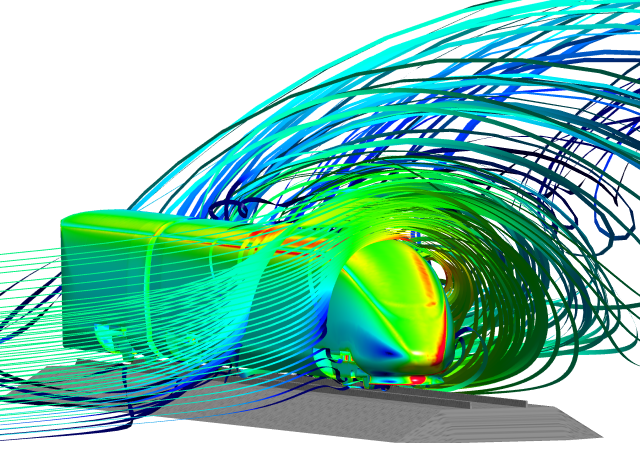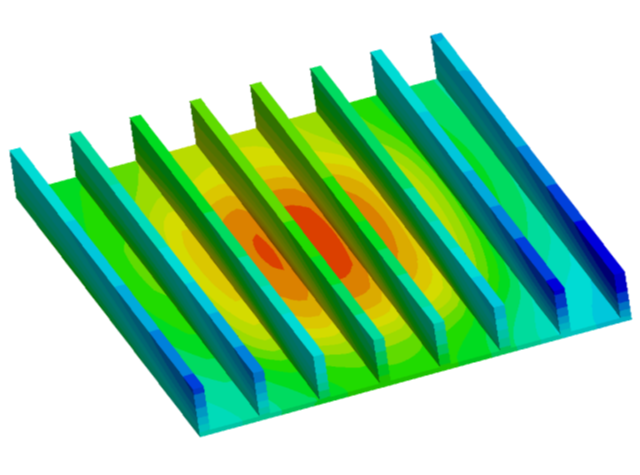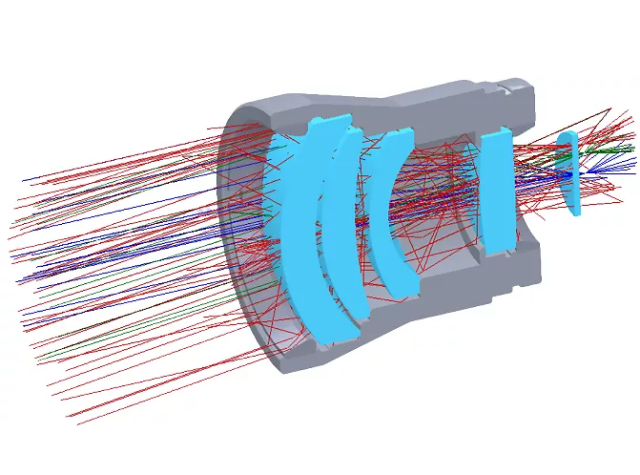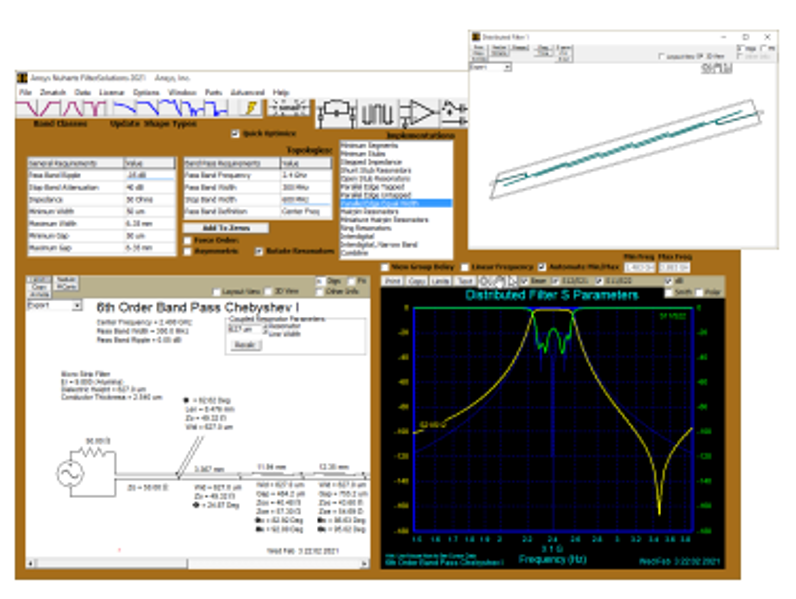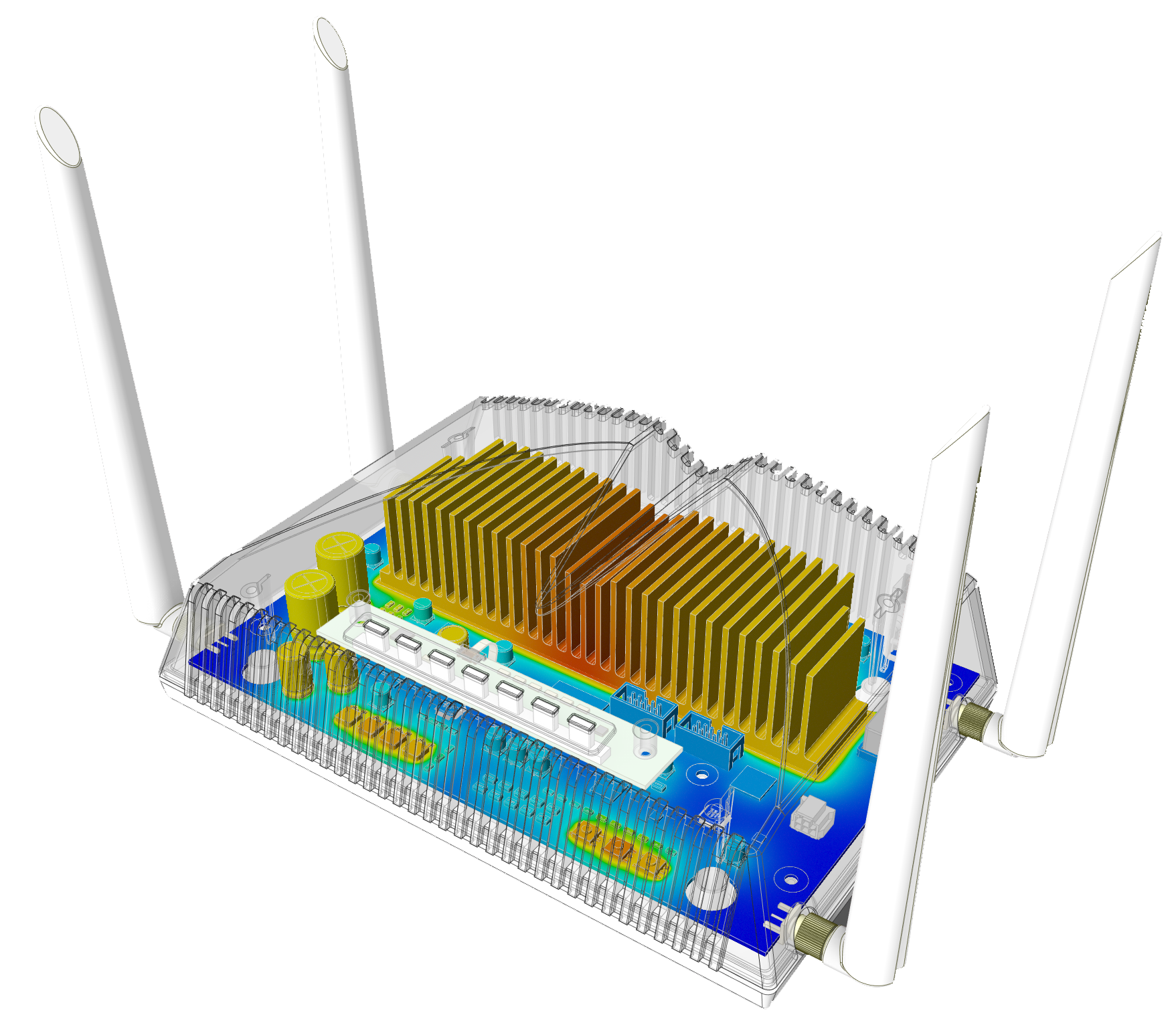Ansys – the global leader in engineering simulation.
50 years of experience and thousands of developers worldwide are the guarantees for the market leader position of Ansys. It was earned by its wide variety of solvers, easy operability, and reliability of engineering simulations in the fields of solid mechanics, thermodynamics, fluid dynamics, and electromagnetics. The Ansys software family offers outstanding possibilities for Simulation Driven Product Development, that are indispensable in today’s modern and cost-effective engineering.
Ansys startup program
Launching any business comes with many obstacles to defeat. But one challenge for startup companies stands out: financing. Access to capital is one of the greatest difficulties when starting out, that is why it is important to have all the smartest solutions during the development of a new product.
Engineering simulations and related software can be a great help or even groundbreaking when it comes to designing a new product, but these innovative methods usually require a solid financial background mainly typical of large companies instead of startups.
As the official distributor of Ansys, the nr.1 simulation software worldwide, Econ offers Ansys’s special STARTUP PROGRAM for companies that are:
We are committed to helping today’s entrepreneurs grow into tomorrow’s industry leaders. This Startup Program is built for early-stage startups having limited funding possibilities and revenues. The program provides full access to Ansys simulation software bundles designed to help develop a new technology quickly and cost-effectively.
- Privately held
- Less than 10 years old
- Have less than USD $5 million in annual revenue
- NOT engineering consulting or simulation services companies
Eligible startups can use Ansys simulation software to build virtual prototypes of their products and components before they actually manufacture them – so they can save time, money, and energy, which allows them to enter the market faster.
The Startup Program provides access to Structural & Fluids, Electromagnetics, and Embedded Software Bundles. In addition, startups also receive marketing and technical support from Ansys, so the software manufacturer will deliver solutions and advice to businesses in case of any problems, questions, or requests. This follow-up system ensures that the program participants take advantage of the opportunities provided by the software.
Startups have achieved outstanding results worldwide with the help of Ansys simulation software in various fields and industries; such as in aerospace, automotive, healthcare, or railway industries; but it also provides solutions in areas like the energy sector, the high-tech, or the chemical industry.
Academic products
Student Engineering Simulation Software
Engineering simulation is playing a growing role in science and engineering at the university level. Undergraduate students use it to learn physics principles and gain hands-on, real-world experience that can lead to a deeper understanding of engineering concepts. Postgraduate researchers apply simulation tools to solve complex engineering problems and produce data for their master’s thesis or doctoral dissertation.
Ansys Academic Product Reference Table 2023 R1
STUDENTS

Millions of students utilize Ansys simulation in the classroom, within projects, and on their competitive student teams. With Ansys learning resources, students learn complex concepts and are job-ready when they graduate.
EDUCATORS

Educators across the world leverage Ansys Academic software and materials education resources to better prepare their students for success. Ansys also offers a host of resources to support curriculum development.
RESEARCHERS

Much of the world’s most important research is done on campus. Ansys-powered simulation helps university research departments push the envelope.
Structures
Ansys simulation technology enables you to predict with confidence that your products will thrive in the real world. Customers trust our software to help ensure the integrity of their products and drive business success through innovation.
Ansys structural analysis software enables you to solve complex structural engineering problems and make better, faster design decisions. With the finite element analysis (FEA) tools available in the suite, you can customize and automate solutions for your structural mechanics problems and parameterize them to analyze multiple design scenarios. You can connect easily to other physics analysis tools for even greater fidelity. Ansys structural analysis software is used throughout the industry to enable engineers to optimize their product designs and reduce the costs of physical testing.
Fluids
With the industry’s deepest and broadest fluid dynamics capabilities, Ansys helps you ensure a steady stream of product and process innovation.
Computational Fluid Dynamics (CFD) is a tool with amazing flexibility, accuracy, and breadth of application. But serious CFD, the kind that provides insights to help you optimize your designs, could be out of reach unless you choose your software carefully. To get serious CFD results, you need serious software. Ansys CFD goes beyond qualitative results to deliver accurate quantitative predictions of fluid interactions and trade-offs. These insights reveal unexpected opportunities for your product — opportunities that even experienced engineering analysts can otherwise miss.
Electromagnetics
Electromagnetic, Electronics, Thermal & Electromechanical Simulation
Ansys electromagnetic field simulation helps you design innovative electrical and electronic products faster and more cost-effectively. In today’s world of high-performance electronics and advanced electrification systems, the effects of electromagnetic fields on circuits and systems cannot be ignored. Ansys software can uniquely simulate electromagnetic performance across component, circuit, and system design, and can evaluate temperature, vibration, and other critical mechanical effects. This unmatched electromagnetic-centric design flow helps you achieve first-pass system design success for advanced communication systems, high-speed electronic devices, electromechanical components, and power electronics systems.
Materials
Granta software ensures accurate, consistent, traceable material information every time and provides the tools you need to support design, research, and teaching.
Every product is made from materials. You need to base your decisions and analysis on the right information about those materials. And you need to apply that information correctly. The Ansys Granta product range can help.
GRANTA MI
It is the leading system for materials information management in engineering enterprises. A single “gold source” for your organization’s materials IP saves time, cuts costs, and eliminates risk. Capture and re-use vital knowledge about your metals, plastics, and composites. Provide reliable data for CAD, CAE, and PLM. Drive material innovation, empower design, and solve materials-related business problems.
GRANTA Selector
The standard tool for materials selection and graphical analysis of materials properties. A comprehensive materials data library plus unique software tools enable you to use materials to innovate and evolve your products; quickly identify solutions to material issues; confirm and validate your choice of materials; and reduce material and development costs.
GRANTA EduPack
It is a software combined with a unique set of teaching resources that support materials education across Engineering, Design, Science, and Sustainable Development curricula. It is used in over 1,400 academic institutions worldwide. Its origin is a teaching software project from the Engineering Department of Cambridge University to develop state-of-the-art resources in all areas of materials-related teaching. It provides access to:
- a comprehensive database of materials and process information;
- powerful materials software tools;
- a range of supporting resources to quickly embed EduPack in courses, and engage students: e.g., lectures, projects, and exercises.
GRANTA Materials Data for Simulation
Gain easy access to the materials property data you need, from within Ansys Mechanical and the Ansys Electronics Desktop environment. Find coverage of many important materials classes, save time wasted searching for and converting data, and gain greater confidence in your data inputs.
Semiconductors
Simulation and modeling tools for foundry-certified and most production-proven semiconductor power integrity and reliability solutions.
Increasing demand for smart electronic devices is driving integration and further miniaturization of integrated circuit (IC) technology. Interacting physics arising from shrinking geometries, especially in FinFETs, stacked-die, and emerging 3D-IC architectures, result in power integrity and reliability-related design challenges. By simulating electromigration, thermal effects, and electrostatic discharge phenomena, you can verify the power noise integrity and reliability of the most complex ICs. Ansys simulation and modeling tools offer you early power budgeting analysis for high-impact design decisions and foundry-certified accuracy needed for IC sign-off.
Optical
From Optics and Illumination Design to Photonics and Imaging
Ansys optical simulation helps you design your optical systems faster than ever. As lasers and other optical breakthroughs are becoming ever more important and more prevalent, modeling light propagation and its impact has become crucial. Ansys software can uniquely simulate optical performance within a system and can evaluate the final illumination effect. This unparalleled virtual product development enables you to improve your optical product performance, from lighting systems to illumination and lasers, while reducing development time and costs at the same time.
Illumination
The Ansys illumination design flow delivers unparalleled simulation speed and accuracy for the modeling, optimization, and visualization of illumination optics. With a complete illumination design software environment, you can produce uniform illumination from real light sources, and remedy the issue of nonuniform illumination sources which plague illumination design.
Imaging systems
Ansys’ imaging design capabilities enable you to design, optimize, and validate reliable imaging optics, such as cameras and sensors. The powerful lens design system and ray tracing simulation let you visualize the impact of mechanical design variations on optical performance and create safe next-generation imaging systems.
Laser and photonics
Ansys laser and photonics simulation software is ideal for applications that depend on the accurate use of laser, fiber optics, or nanoscale optical structures. Ansys software lets you design, analyze, and optimize the most complex systems, easily managing photonic/optoelectronic components and creating next-generation optical systems.
CAD integration
Integrated into leading CAM/CAD solutions, Ansys optical simulation is the best application for engineers to package optical systems in CAD software. Eliminate errors caused by importing and exporting data and realize significant time savings by working on your lighting design directly within your CAD system.
Optical applications
Our physics-based imaging, photonics, and illumination simulation software streamlines the design process, so you can better understand how your product behaves. You can quickly optimize your design using simulation, instead of wasting time building and testing costly prototypes. So whether it’s a TV screen, a headlamp, a telescope, or a fiber optic network, Ansys software can help you design more efficient products.
Platform
Leverage simulation technology with a single platform that unifies legacy tools and custom workflows to help companies transform designs into products.
The Ansys Workbench platform is the backbone for delivering a comprehensive and integrated simulation system to our customers. Using Workbench for your product development simulations will result in higher productivity from integrated applications leveraging common and compatible data models. Workbench gives you access to multiphysics and systems-level insights that could not be attained before. IT organizations realize greater reliability, lower support costs, and lower total cost of ownership because our platform addresses the hardware, software, and data compatibility problems encountered with using many standalone applications.
Embedded software
Embedded software is increasingly being used in smart devices, but imperfect code can be the cause of many product failures. Industry leaders estimate that every 1,000 lines of embedded software contain eight bugs. To manage this quality risk, as well as to meet higher standards for software certification, you need to leverage embedded software development tools and certified code generators.
Ansys provides a model-based embedded software development and simulation environment with a built-in automatic code generator to accelerate embedded software development projects. System and software engineers use Ansys SCADE solutions to graphically design, verify, and automatically generate critical systems and software applications with high dependability requirements. SCADE solutions are highly interoperable and can be easily integrated, allowing for development optimization and increased communication among team members.
Multiphysics
Deep, proven solver technology from Ansys is a given. Applying this solver technology to multiphysics simulation is the next step for many engineers. See below for the range of Ansys multiphysics offerings available to meet your needs.
We live in a world where multiple physical forces are at play, and the products we produce are often subject to many of these physical forces simultaneously. Fluid forces, thermal effects, structural integrity, and electromagnetic radiation can all impact the performance of products and industrial processes. If you try to isolate the multiple forces in play, you may not get an accurate prediction of behavior. Ansys multiphysics solutions can help engineers examine these effects in combination and isolation, achieving the highest fidelity solution when it’s needed.
Systems
By developing virtual product prototypes you can couple the physical attributes of a product with the systems and embedded software.
As product complexity grows, so does the challenge of integrating the individual components in a system to ensure they work together as expected. Systems modeling and simulation help you create a complete virtual prototype to understand and optimize the critical interactions between physics, controls, and the environment throughout the product development process. Then by combining system modeling with sensors and big data, you can develop a digital twin of your product to manage its performance and maintenance after it has been deployed.
- Fluid-dynamics simulations for reducing pressure drop, calculating lift and drag coefficients and resistance parameters, predicting fluid behavior, and evaluating fluid loads
- Analyses of deflections and stress distributions for complex parts and assemblies which may include non-linear contact and large deflections
- Determining the natural frequency and vibration characteristics of the product
- Simulation of static magnetic fields and conduction
- Reducing trial-and-error iterations and quickly handling unexpected problems when simulating polymer extrusion processes and evaluating die designs
- Thermal simulations to study the performance of the product within a projected temperature range
Discovery
The solutions offered by the Ansys Discovery product line enable engineers to simulate and examine the actual behavior of the product during the concept development phase.
Ease of use, exceptional functions, and solutions combined with the quality and reliability of the market leader Ansys gives such tool into the hands of designers, which cuts down the design process drastically and offers an unprecedented insight into the behavior of the future product regardless of mechanical, fluid-dynamical, thermal or electromagnetic examination.
Ansys Discovery Simulation
An easy-to-use simulation tool with guided workflows that enables engineers to learn about the behavior of the future product in both early- and late-stage design, no matter whether thermal, structural, fluid-dynamical, or multi-physics analysis.
Discovery Simulation makes the design process interactive and enables engineers to see the impact of the geometric changes immediately. There is no longer a need to wait for re-meshing and re-solving. You get immediate answers to your problems, like what happens if the load suddenly increases if the material changes, or if the input velocity of the flow media drops.
An interactive simulation environment delivers instant results allowing engineers at all levels and in any specific field to explore the possibilities provided by their concept and design while taking the concurrent design to a new level.
Discovery Simulation Features
- Immediate engineering simulation results for designing
- Eliminating geometry preparation, meshing, solving processes, and post-processing
- Performing structural, internal, and external fluid-dynamical, thermal, and modal analysis
- Editing geometry from other CAD sources or modeling completely new ideas
- Receiving live updates as you change simulation physics, geometry, boundary conditions, or alter display characteristics
- Benefiting from the readily available power of GPU
Ansys Discovery Modeling
An easy-to-use and fast 3D designer, a perfect tool for concept modeling, creating final assemblies, or editing, repairing, and preparing a 3D model from any CAD format.
The Direct Modeler makes the creative work for engineers easier by freeing them from the constraints of traditional design software. This technology is the basis of CAD independence, a hallmark of every Ansys product as all known 3D formats, even STL file formats can be opened and modified easily and quickly making the work and information exchange easier between customers, R&D engineers, other team members, and manufacturing.
Due to a high level of compatibility, it is a reliable tool for Reverse Engineering, 3D printing, or other manufacturing-related tasks.
Discovery Modeling Features:
- Modeling 3D parts, assemblies, drawings, or importing and editing external CAD files
- Creating manufacturing fixtures, processing plans, or optimizing models for toolpath
- Preparing Reverse Engineering tasks or processing STL files within seconds
- Preparing, and optimizing any models for 3D printing
- Designing, importing, and optimizing sheet metal files

Embedded software
Embedded software is increasingly being used in smart devices, but imperfect code can be the cause of many product failures. Industry leaders estimate that every 1,000 lines of embedded software contain eight bugs. To manage this quality risk, as well as to meet higher standards for software certification, you need to leverage embedded software development tools and certified code generators.

